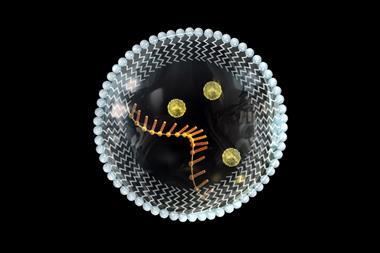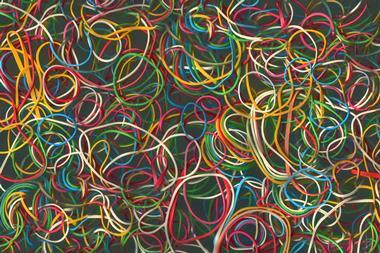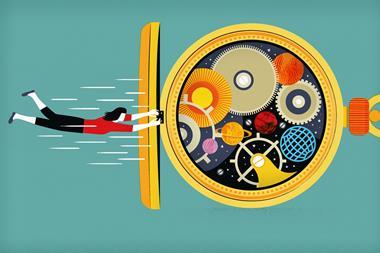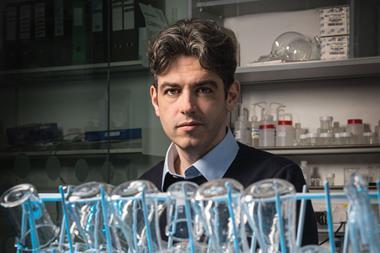Researchers in the UK and US have formally laid out the foundations of a theory that they claim has the potential to solve the long-standing puzzle of how life arose from non-living chemicals. The team behind it says it could also help detect signatures of possible life beyond Earth, how to evolve chemicals in order to speed up discovery of new drugs and materials, or even make new life in the lab. However, the paper in Nature was quickly met with criticism for the way it was written and how the ideas were presented.
Called assembly theory, it places the concepts of molecular complexity and ‘chemical memory’ at the heart of how objects, including life, assemble with increasing complexity over time, across the physical world. ‘It just seems so obvious to me,’ says Lee Cronin at the University of Glasgow, UK, who conceived and developed the theory with Sara Walker at Arizona State University, US. ‘Basically, it provides a molecular mechanism by which emergence of life can be explained by chemistry.’
It will help us understand the link between physics and biology through chemistry
Lee Cronin, University of Glasgow
Cronin, Walker, and colleagues first published work on assembly theory in 2021. They showed how the complexity of molecules can be predicted by algorithms and measured with mass spectrometry to determine whether a molecule is likely to be the product of life or not. The measurement, called the assembly index, is based on the minimum number of steps needed to build a given molecule.
The work revealed an assembly index threshold for life, meaning that any molecule with a complexity above this threshold had to have been formed by a living or life-like process. This suggested a new kind of biosignature that could be used to search for extraterrestrial life, or at least life-like processes, which may look nothing like the life we know on Earth.
From randomness to selection
Now, the researchers have advanced their assembly theory model to explain how selection and evolution – terms that they use in a broader and more general sense than those used in biology – can drive chemicals towards increasingly complex forms in the fewest number of steps. In doing so, it could also explain how randomly interacting, inert, non-living matter somehow transitioned into the molecules of life via some form of selection process.
‘Assembly theory finds the scale in the universe at which life can emerge and that’s at the scale of the chemical bond,’ says Cronin. ‘This provides an entirely new way to look at the matter that makes up our world, as defined not just by immutable particles but by the “memory” needed to build objects through selection over time.’ This ‘memory’ of an object’s formation history, explains Cronin, is ‘stored’ in the variety and intricacy of its chemical bonds, which correspond to its level of complexity. This formation history is how assembly theory defines an object, which means that the degree of selection among a set of objects can be measured if the molecular complexity, or assembly index, is known.
However, to make this measurement of selection, the team realised another variable besides the assembly index was required: the abundance or copy number of a given object in a set, and it’s crucial. ‘Complex objects with identical copies are absolutely gold markers for selection,’ says Cronin. This is because the more complex an object becomes, the likelihood of an identical copy existing diminishes without selection of an information-driven mechanism to make it. It’s why a complex object doesn’t just come into being at random – it’s defined by the history of what made it through selection.
By formulating an equation that factors in both the assembly index and copy number, the team was able to calculate a quantity, called assembly, which describes the degree of selection in a set of objects. ‘Working this out transformed assembly theory from some kind of signature for life to actually understanding the process of building life,’ Cronin adds.
Testing times
The researchers have conducted experiments to test the theory showing it can quantify selection and evolution in systems including diethyl phthalate, short polypeptides and cellular structures. Although developed at the observable molecular level in order to measure assembly with spectroscopy techniques, the concept, the team says, has potential to also be used more generally to model how all kinds of complexity evolve, including language and technology.
‘A key feature of the theory is that it is experimentally testable,’ says Cronin. ‘This opens up the exciting possibility of using assembly theory to design new experiments that could solve the origin of life by creating living systems from scratch in the laboratory.’
However, the theory has met with a mixed response. In the days since the paper published, scientists have publicly aired their views. Reaction has ranged from genuine debate, enquiry and agreement to outrage and insults levelled at the authors for purportedly questioning or misunderstanding biological evolution.
In response to some of the backlash, Walker suggested in a comment thread that some people were too busy focusing on semantics and not the technical content. ‘We are working to respond to valid criticisms and reflect on good ones but those discussions are not ones for Twitter,’ she writes.
One of those weighing in on the comments was Palli Thordarson, who researches chemical self-assembly at the University of New South Wales, Australia. With a critical eye, he has been open to the ideas presented, telling Chemistry World: ‘Assembly theory, in my mind, clearly has merit and has already advanced our thinking of complex chemical systems, particularly in the context of origin of life research and astrobiology.’
Pros & Cons of Assembly Theory paper in @Nature TL;DR People are upset but not 100% justifiably IMO and some seems to stem from targeting one of the lead authors @leecronin while ignoring (surprise-a woman!) the other @Sara_Imari . Paper has merits but some claims are wrong 1/19 https://t.co/G6vb2tiu6T
— Palli Thordarson (@PalliThordarson) October 10, 2023
‘The mass spectrometry work in the 2021 paper demonstrates that this isn’t just some nonsense,’ Thordarson adds. ‘However, I feel that it needs to be better experimentally confirmed in the prebiotic chemistry context before we can accept assembly theory as having a much deeper fundamental role at the interface of chemistry, biology and physics.’
‘Could the theory be wrong? Possibly. That is the point and the case for all theories,’ says Cronin. ‘But perhaps it is less wrong than our current understanding and it will help us understand the link between physics and biology through chemistry. We have to try and we think we are onto something.’
References
A Sharma et al, Nature., 2023, DOI: 10.1038/s41586-023-06600-9












2 readers' comments